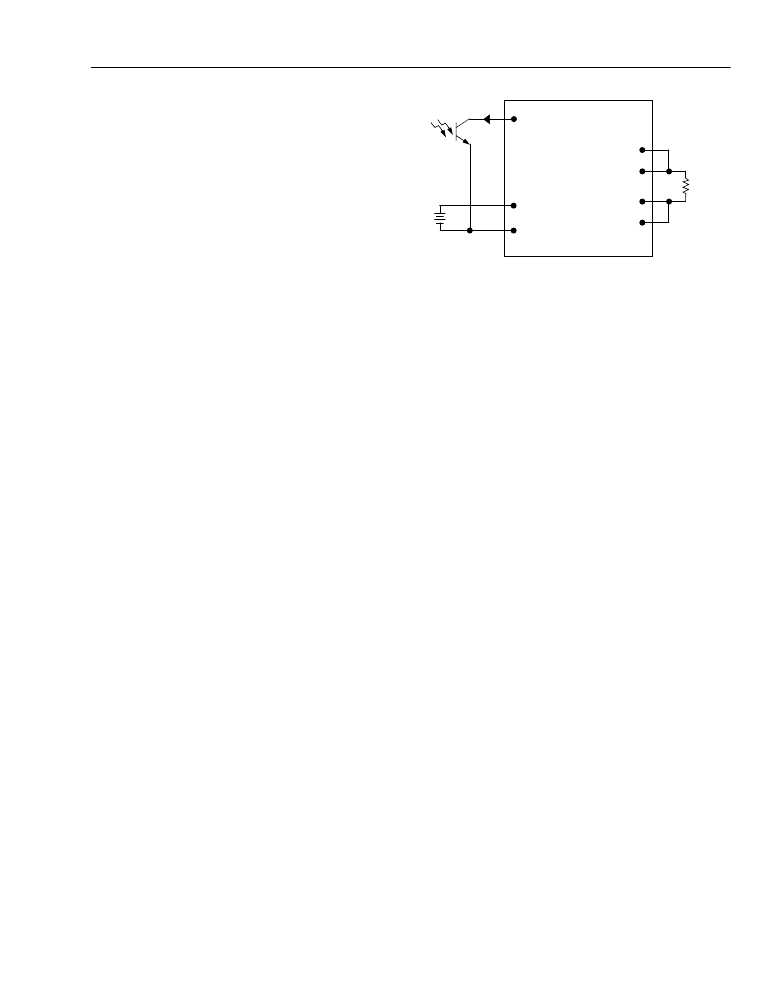- 您現(xiàn)在的位置:買賣IC網(wǎng) > PDF目錄361331 > QW050A1 Analog IC PDF資料下載
參數(shù)資料
| 型號: | QW050A1 |
| 英文描述: | Analog IC |
| 中文描述: | 模擬IC |
| 文件頁數(shù): | 9/20頁 |
| 文件大?。?/td> | 1272K |
| 代理商: | QW050A1 |

Lucent Technologies Inc.
9
Data Sheet
May 2000
dc-dc Converters; 36 to 75 Vdc Input, 5 Vdc Output; 50 W and 75 W
QW050A1 and QW075A1 Power Modules:
Feature Descriptions
Overcurrent Protection
To provide protection in a fault (output overload) condi-
tion, the unit is equipped with internal current-limiting
circuitry and can endure current limiting for up to one
second. If overcurrent exists for more than one second,
the unit will shut down.
At the point of current-limit inception, the unit shifts
from voltage control to current control. If the output volt-
age is pulled very low during a severe fault, the current-
limit circuit can exhibit either foldback or tailout charac-
teristics (output current decrease or increase).
The module is available in two overcurrent configura-
tions. In one configuration, when the unit shuts down it
will latch off. The overcurrent latch is reset by either
cycling the input power or by toggling the ON/OFF pin
for one second. In the other configuration, the unit will
try to restart after shutdown. If the output overload con-
dition still exists when the unit restarts, it will shut down
again. This operation will continue indefinitely until the
overcurrent condition is corrected.
Remote On/Off
Negative logic remote on/off turns the module off dur-
ing a logic high and on during a logic low. To turn the
power module on and off, the user must supply a switch
to control the voltage between the on/off terminal and
the V
I
(–) terminal (V
on/off
). The switch can be an open
collector or equivalent (see Figure 16). A logic low is
V
on/off
= 0 V to 1.2 V. The maximum I
low is 1 mA. The switch should maintain a logic-low
voltage while sinking 1 mA.
on/off
during a logic
During a logic high, the maximum V
the power module is 15 V. The maximum allowable
leakage current of the switch at V
on/off
generated by
on/off
= 15 V is 50 μA.
If not using the remote on/off feature, short the ON/OFF
pin to V
I
(–).
8-720 (C).c
Figure 16. Remote On/Off Implementation
Remote Sense
Remote sense minimizes the effects of distribution
losses by regulating the voltage at the remote-sense
connections. The voltage between the remote-sense
pins and the output terminals must not exceed the out-
put voltage sense range given in the Feature Specifica-
tions table, i.e.:
[V
O
(+) – V
O
(–)] – [SENSE(+) – SENSE(–)]
≤
0.5 V
The voltage between the V
must not exceed the minimum output overvoltage pro-
tection value shown in the Feature Specifications table.
This limit includes any increase in voltage due to
remote-sense compensation and output voltage set-
point adjustment (trim). See Figure 17.
O
(+) and V
O
(–) terminals
If not using the remote-sense feature to regulate the
output at the point of load, then connect SENSE(+) to
V
O
(+) and SENSE(–) to V
O
(–) at the module.
Although the output voltage can be increased by both
the remote sense and by the trim, the maximum
increase for the output voltage is not the sum of both.
The maximum increase is the larger of either the
remote sense or the trim. Consult the factory if you
need to increase the output voltage more than the
above limitation.
The amount of power delivered by the module is
defined as the voltage at the output terminals multiplied
by the output current. When using remote sense and
trim, the output voltage of the module can be
increased, which at the same output current would
increase the power output of the module. Care should
be taken to ensure that the maximum output power of
the module remains at or below the maximum rated
power.
SENSE(+)
V
O
(+)
SENSE(–)
V
O
(–)
V
I
(–)
+
–
I
on/off
ON/OFF
V
I
(+)
LOAD
V
on/off
相關(guān)PDF資料 |
PDF描述 |
|---|---|
| QW075A1 | Analog IC |
| QW050F1 | Analog IC |
| QW075F1 | Analog IC |
| QW0905-LUR3333H | SUPER BRIGHT ROUND TYPE LED LAMPS |
| QWD1205 | Analog IC |
相關(guān)代理商/技術(shù)參數(shù) |
參數(shù)描述 |
|---|---|
| QW050A81 | 功能描述:DC/DC轉(zhuǎn)換器 5V 50W OUT RoHS:否 制造商:Murata 產(chǎn)品: 輸出功率: 輸入電壓范圍:3.6 V to 5.5 V 輸入電壓(標(biāo)稱): 輸出端數(shù)量:1 輸出電壓(通道 1):3.3 V 輸出電流(通道 1):600 mA 輸出電壓(通道 2): 輸出電流(通道 2): 安裝風(fēng)格:SMD/SMT 封裝 / 箱體尺寸: |
| QW050B71 | 功能描述:DC/DC轉(zhuǎn)換器 12V 4.17A 50W 8-Pin RoHS:否 制造商:Murata 產(chǎn)品: 輸出功率: 輸入電壓范圍:3.6 V to 5.5 V 輸入電壓(標(biāo)稱): 輸出端數(shù)量:1 輸出電壓(通道 1):3.3 V 輸出電流(通道 1):600 mA 輸出電壓(通道 2): 輸出電流(通道 2): 安裝風(fēng)格:SMD/SMT 封裝 / 箱體尺寸: |
| QW050F1 | 功能描述:DC/DC轉(zhuǎn)換器 3.3V 10A 33W 8-Pin RoHS:否 制造商:Murata 產(chǎn)品: 輸出功率: 輸入電壓范圍:3.6 V to 5.5 V 輸入電壓(標(biāo)稱): 輸出端數(shù)量:1 輸出電壓(通道 1):3.3 V 輸出電流(通道 1):600 mA 輸出電壓(通道 2): 輸出電流(通道 2): 安裝風(fēng)格:SMD/SMT 封裝 / 箱體尺寸: |
| QW051 | 制造商:NTE Electronics 功能描述:Res Metal Film 51 Ohm 2% 1/4W ±200ppm/°C Conformal AXL Thru-Hole |
| QW051-10 | 制造商:NTE Electronics 功能描述: |
發(fā)布緊急采購,3分鐘左右您將得到回復(fù)。